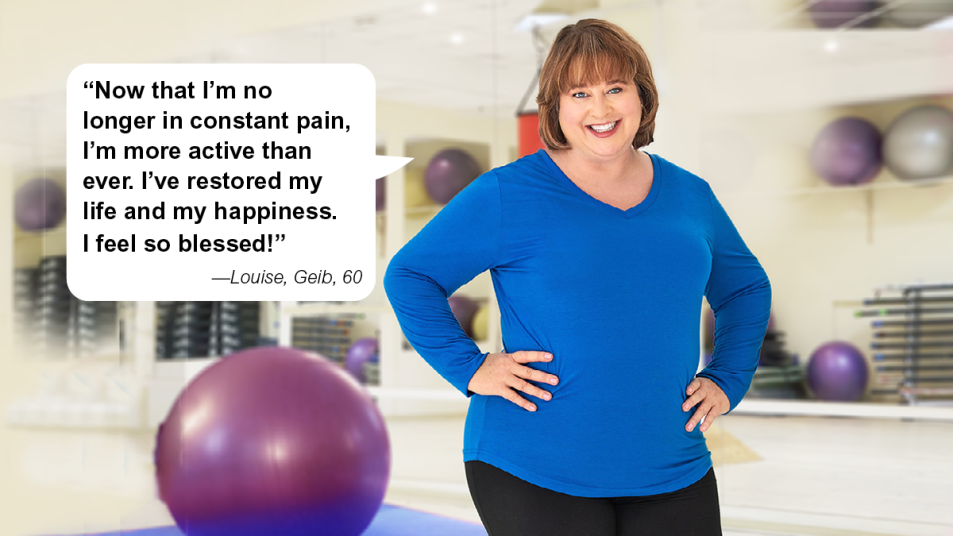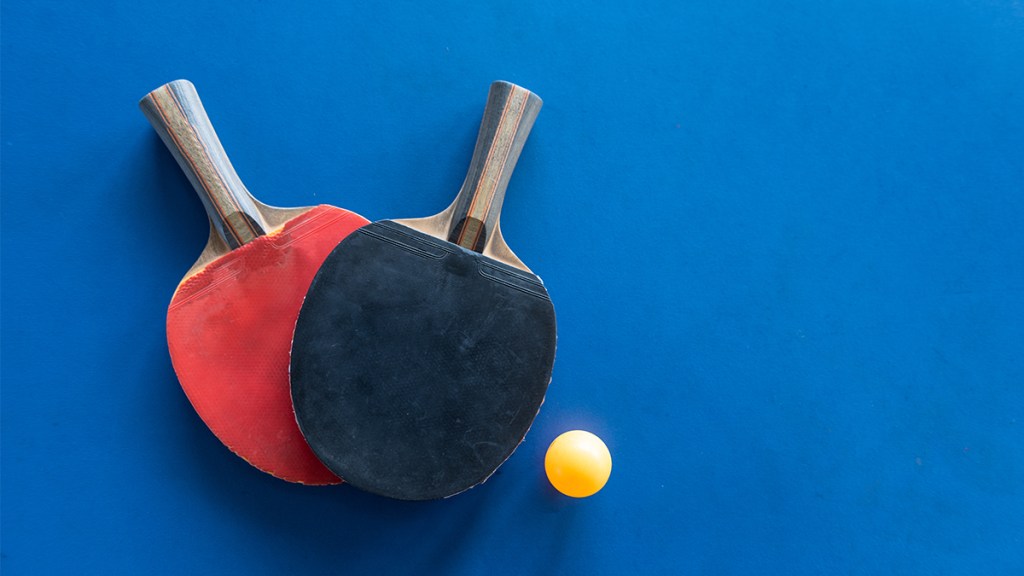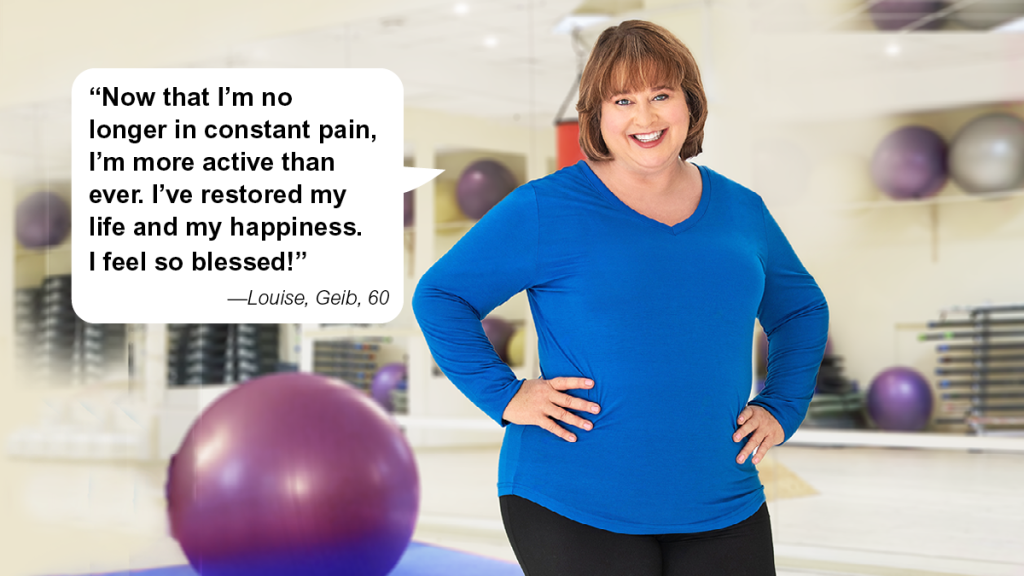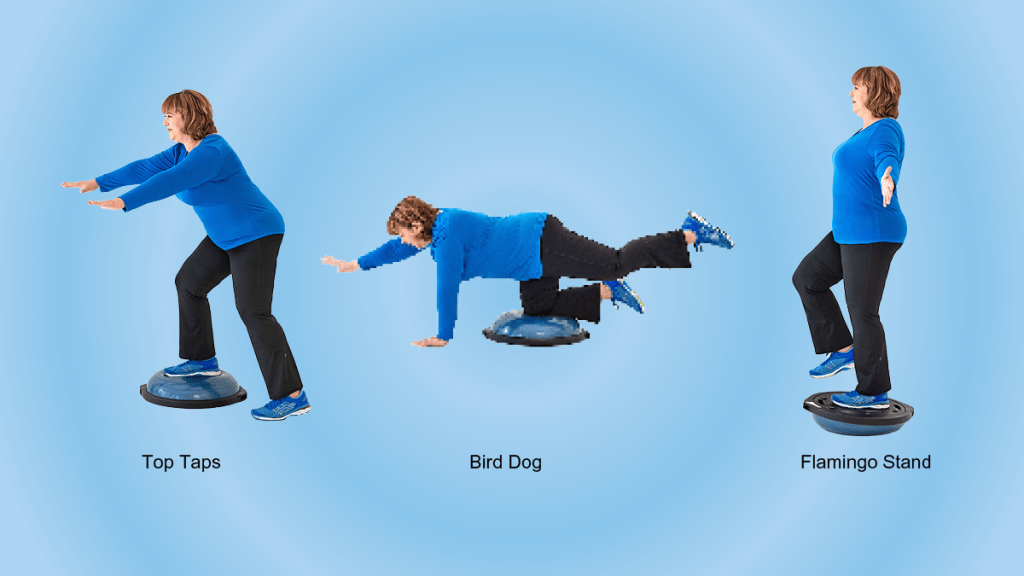The Cold Water Tip That Dials Down The Dizziness That Comes With Migraines By 93%
Plus, the non-drug approach that helped one woman outsmart her vestibular migraines

If you suffer from migraines, then you know how debilitating these headaches can be. The telltale symptoms of pulsing pain, blurred vision and increased sensitivity to light and sound can strike at any time, leaving you at their mercy for 36 to 72 hours. And many sufferers also experience vestibular symptoms (which relate to the body’s sense of balance and movement in space), including feelings of dizziness, vertigo or imbalance. When a migraine also features these kinds of vestibular symptoms, it’s known as a vestibular migraine. Yet many people have never even heard of the condition. To learn more about this common but rarely talked about disorder, we connected with doctors who treat it and a woman who shared her story, “How I cured my vestibular migraine.” Read on for the details.
What is a vestibular migraine?
Vestibular migraine is a nervous system disorder that affects many migraine patients. “Vestibular migraines are the most common cause of dizziness,” says Amir Kheradmand, MD, research director at the Vestibular and Ocular Research Lab at Johns Hopkins University. Some 30 to 50% of migraine sufferers experience these symptoms. Women with the condition typically experience the usual migraine symptoms, plus unsteadiness, sensitivity to motion and brain fog — but these secondary symptoms can also occur without a headache. These symptoms occur because of disruptions to the body’s vestibular system, which links the inner ear to the brain and is responsible for our sense of balance.
“Criteria for diagnosis, according to the International Classification of Headache Disorders, include that at least 50% of vestibular symptoms (dizziness, spinning, vertigo, [or] out of balance sensation) are accompanied by at least one migrainous feature,” explains board-certified neurologist Nina Riggins, MD, PhD, FAAN, FAHS, Director of the Headache and Traumatic Brain Injury Center at UC San Diego Health, who specializes in headache medicine. “Migrainous features include pulsing pain on one side of the head and sensitivity to light and sound.” (Click through to learn more about the link between stress and vertigo.)
Dr. Riggins, who’s also the President of the Brain Performance Center and Research Institute, says anyone who gets migraine headaches and experiences dizziness at the same time should visit their doctor to identify the cause. That’s key, since several other conditions, such as Meniere’s disease (an inner ear problem), persistent postural perceptual dizziness (a common cause of chronic dizziness) and low blood pressure present similar symptoms to vestibular migraine, and it’s important to rule those issues out first.
Researchers are still working to determine the cause of vestibular migraine, but several things are thought to contribute, including genetics and environmental factors like travel, diet, stress, weather changes and changes in sleep patterns.
Who is at risk of vestibular migraine?
Anyone can experience a vestibular migraine, but certain groups are more likely to suffer than others. But just like traditional migraines, women are at greater risk. Dr. Riggins says about one in four women have migraine headaches, adding that “migraine incidence peaks at around age 35 and then again at around perimenopausal age.”
As with traditional migraines, hormonal flux play a role. In fact, research suggests that when estrogen dips (as it does in menopause) women tend to experience worse vestibular migraines.
Tips for managing vestibular migraine naturally
There’s no cure for vestibular migraine, but there are steps you can take to reduce their frequency and relieve symptoms. As with traditional migraines, doctors often prescribe preventive medications to reduce the frequency of attacks, but experts say the same strategies that prevent migraines (eating a healthy diet, cutting back on caffeine, getting enough sleep and avoiding migraine triggers) can also ward off vestibular migraines. But combining the two may be the best approach, according to one study, which found that lifestyle changes and preventive meds eased vestibular migraines for 75% of sufferers.
“Many patients with vestibular migraine report that they have anxiety due to the possibility of the next attack of dizziness,” says Dr. Riggins. “This makes it even more important to learn your family medical history when possible and create a proper treatment plan that includes migraine acute treatments, and preventive measures.” Here, study-proven techniques to help outsmart vestibular migraines:
Try this cold-water trick
Stimulating the vagus nerve — a nerve that runs from the brain to the gut and is considered the “information highway” to the brain — may be key to easing vestibular migraines. Researchers reporting in the journal Neurology found that stimulating the vagus nerve during a migraine attack eased vestibular symptoms in 93% of subjects.
Deep breathing is a proven way to stimulate the vagus nerve, as is cold exposure, which was shown to increase vagus nerve activity by up to 163% in a University of Buffalo study. To get the perks, simply apply ice water to your cheeks, forehead and closed eyes for three minutes. (Click through for more ways to stimulate the vagus nerve and how to use a TENS machine to stimulate the vagus nerve.)
Have some fun

People who suffer from vestibular migraine often get dizzy or disoriented when they change their head or body position, and research suggests that activities that boost spatial orientation and coordination, like ping-pong, tennis or pickleball, might ease symptoms. (Click through to learn more health benefits of pickleball.)
Consider supplements
Scientists have linked several types of nutritional deficiencies to migraine headaches. And when it comes to vestibular migraine, getting more of the mineral magnesium may be critical. Researchers have found that 50% of people who suffer from migraines are deficient in magnesium. And a small study found that supplementing with 200 mg of magnesium citrate reduced the frequency of migraine attacks, dizziness and balance problems in subjects with vestibular migraine. (Click through for more benefits of magnesium glycinate and citrate.)
Another supplement to consider: Vitamin B-2, or riboflavin. A study published in the Electronic Physician Journal found that vitamin B-2 reduced migraine symptoms as well as prescription migraine medication. That’s because riboflavin helps maintain normal energy production in brain cells, preventing the cellular damage and inflammation linked to migraines.
Finally, the sleep hormone melatonin may help ease vestibular migraines, suggests research in the International Journal of Otolaryngology. Credit goes to melatonin’s ability to regulate the body’s sleep/wake cycle, which may reduce the number and severity of vestibular migraine attacks.
Exercise
“Regular exercise is shown to decrease the frequency and intensity of migraine attacks,” says Dr. Riggins. “For people living with vestibular migraine, vestibular physical therapy [a special form of physical therapy that improves balance and eases dizziness and vertigo] can help them avoid falls, which is very important.”
Specific exercises can help, as well. In an Australian study, balance exercises helped sufferers feel 27% less dizziness. (Click through for a simple exercise to improve balance.) And research shows that resistance exercises reduced vertigo and dizziness in people with vestibular migraine.
It worked for Louise Geib! Debilitating head pain and dizziness kept her leading a full life — until she discovered the fun, simple exercise that restored her health and happiness. She tells her story, “how I cured vestibular migraine,” below:
How Louise Geib, 60, cured her vestibular migraines

Take it one second at a time. The meeting will be over in 15 minutes. I can do this, Louise Geib, 60, told herself as she struggled through intense pressure in her head. “I was meeting with my team, and I was completely miserable,” Louise recalls. “As the owner of a mechanical contracting company, I had to be present, but it was hard to muster through. When someone was speaking, I had to turn my chair toward them instead of my head to prevent dizziness.
“All I could think about was how bad I felt. No one knew that anything was wrong, but I often had to follow up later, usually asking the same questions I had asked earlier. I was used to being on top of my game, but now I felt behind. I knew I couldn’t go on like this—something had to change.
Louise felt powerless over her pain
“After a particularly stressful season in my life, I found myself dealing with chronic, debilitating pressure in my head that made it impossible to do anything. I could barely do any work on my computer, and I could only take calls on speakerphone. I started to work from home, but as my productivity continued to suffer, I was forced to sell my company.
“Not only did I have pressure in my head and stiffness in my neck, but the dizziness never let up. I felt like I was on a boat 24/7. I was also sensitive to sound and light, and I had tingling in my arms, legs and feet. I battled brain fog, but when I started to slur my words, I became really worried. Everyday tasks like going to the grocery store were exhausting, and it felt like my whole life centered around managing my symptoms. I was determined to find out what was wrong with me, and because I had a tremendous faith in God, I knew I would get better.
“How I cured my vestibular migraine”
“At first, I chalked my symptoms up to being tired, but as they persisted, I made an appointment with my doctor. After running tests, he thought I might have a serious abnormality in my ear canal that would require surgery — something I wanted to avoid.
“I decided to get a second opinion, so I made an appointment at the Johns Hopkins Neuro-Visual and Vestibular Disorders Center. There, the doctor ran a battery of tests and diagnosed me with vestibular migraine. He explained that it’s a common type of migraine marked by dizziness and head pressure. I learned that the condition affects the vestibular system, which links the inner ear to the brain and is responsible for our sense of balance.
“The doctor told me my condition could be managed with some diet changes, like reducing my caffeine intake. He also prescribed a small dose of a prescription antidepressant that is used off-label for migraines. Most surprisingly, he told me that I should move as much as possible.
“I was thrilled to learn I wouldn’t need surgery, but I was shocked that I had something as common as a migraine because it felt so different from ‘normal’ migraine headaches. I was desperate to learn more about the condition, so I read the book, Heal Your Headache, by David Buchholz, MD, and found information through the Vestibular Disorders Association.
“I learned the best way to manage my condition was with exercises that challenge the vestibular system — just like my doctor said. I read that balance exercises were most effective, so I hired a personal trainer with a rehab background. He created a program using a BOSU [“Both Sides Up”] ball, a dome-shaped half-ball attached to a flat rubber platform.
“At first, the exercises were challenging, so I started out doing them on the ground. As I got stronger, I would stand either on the rounded or flat side of the BOSU ball, using a wall or bench for support if I became dizzy. Since the ball is curved, you have to work hard to keep your balance. This helped strengthen the muscles in my eyes and the vestibular system.
“Although the workouts initially left me a little fatigued, within weeks, my symptoms had significantly improved. And not only did my balance and dizziness get better, but my legs, core and back got stronger as well. Outside the gym, I started pushing myself to go for a walk or run an errand to keep moving. I couldn’t believe how important exercise was to my recovery, and I know it’s a habit I’ll keep up forever.
“Now that I’m no longer dealing with constant pain, I’m more active than ever. I love to take trips and go skiing, white-water rafting and hiking. Exercise has restored my life and my happiness — and I feel so blessed!”
The balance exercises that cured Louise’s vestibular migraines
Keep scrolling for 3 of the balance moves that helped Louse get relief from her vestibular migraines. Try them today!

Toe taps: This improves coordination to reduce dizziness. To do: Stand next to the ball, flat side down. Carefully place your right foot on the BOSU. Press up to standing on your right foot, then lower your left foot to the ground. Do 10 reps on each side.
Bird Dog: This more strengthens the lower back and challenges your balance to improve stability. To do: Kneel on the ball, flat side down and place your hands on the ground. Extend right hand forward and left foot back. Return to start. Do 10 reps per side.
Flamingo Stand: This strengthens the core to ease dizziness. To do: Place the ball on the ground, flat side up. Step on the center with your right foot. Slowly bend your left knee to lift your left foot up, keeping a slight bend in the right knee. Hold for 10 seconds, switch sides.
This content is not a substitute for professional medical advice or diagnosis. Always consult your physician before pursuing any treatment plan.
For more on headache relief, keep reading:
10-Minute Cure for The Side Effects of Stress: Jaw Pain, Tooth Grinding + Headaches
Doctor-Approved Home Remedies That Ease A Heat-Induced Headache Faster Than Meds
MD Reveals the Best Remedies for Headaches That Involve Pain Behind The Eyes













